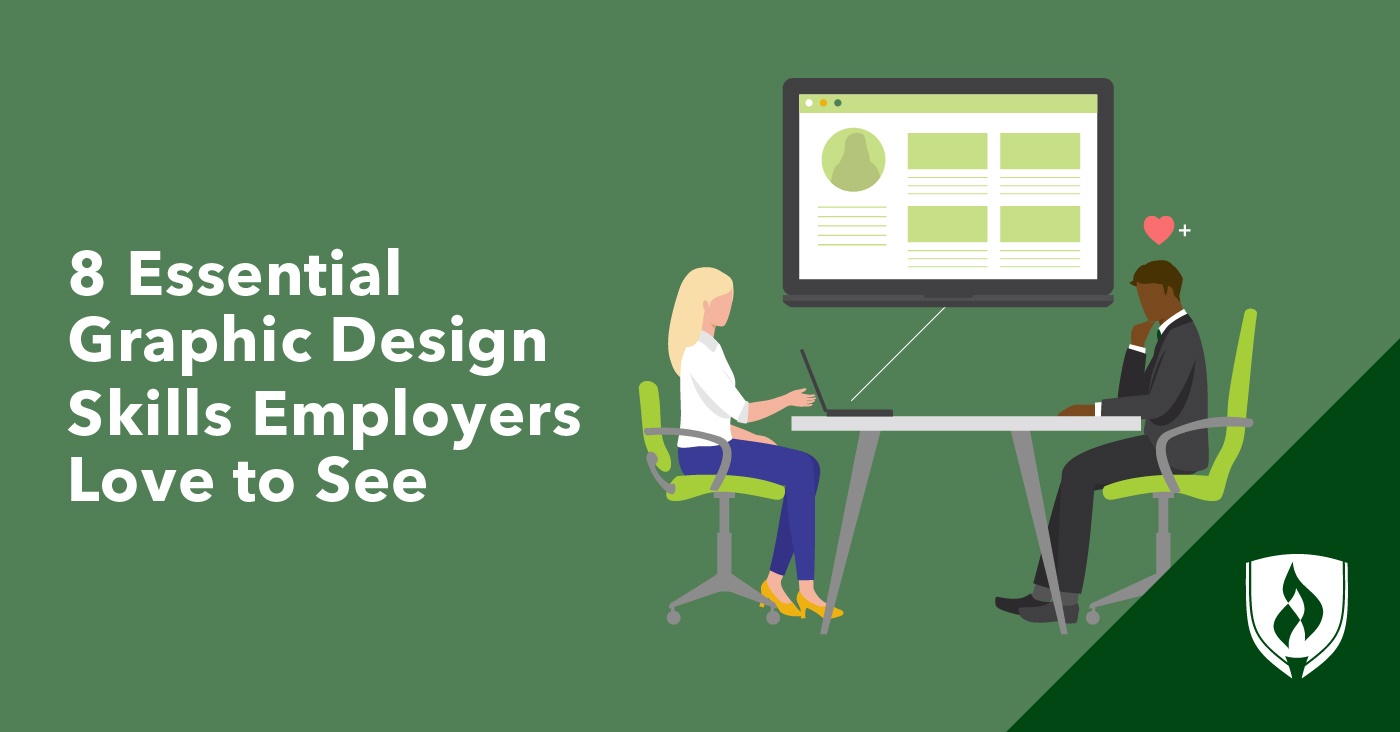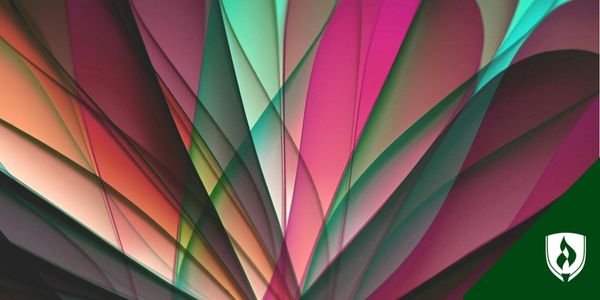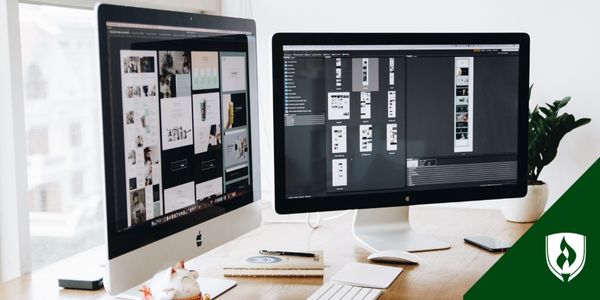
You love design and want to be at the top of your game as you build the foundation for a long career in graphic design. So, which skills should you focus on in order to be the best graphic designer you can be? One of the best ways to narrow it down is to focus on what employers are looking for. To help with that, we asked the experts to highlight the design skills every graphic designer should strive to perfect in 2022 and beyond.
Design skills that will benefit nearly any graphic design pro
These graphic design skills range from broadly applicable fundamentals to specialized niche competencies that can help boost your versatility as a design professional. No matter where you are in your design career, dedicating some time to refining the following abilities will help you become a well-rounded creative professional.
1. Business acumen
It’s sometimes a hard truth, but the ability to create something aesthetically pleasing doesn’t mean much in this field if it isn’t tied to a business strategy or goal. Having a sense of business savvy isn’t just for those with corner offices—you need to understand the purpose behind your designs to be truly effective. “Graphic design isn’t just about creating appealing content; it’s about solving problems,” says Mark Hellevik, creative director at Periscope.
Hellevik says he’s more likely to hire designers who can demonstrate an ability to solve a business problem, even if it’s an imagined problem. Demonstrating your practical problem-solving knowledge in your portfolio will impress hiring managers who know how truly valuable skills like communication and business acumen are.
2. Emotional intelligence
It’s a given that having business acumen is a necessary skill for good designers, but increasingly, employers are looking for designers with emotional intelligence as well.
Jay Soni, marketing director at Yorkshire Fabric Shop says though it’s not an obvious skill at first, it’s a key part of good design.
“Most designs are made to persuade people in some way, which necessitates a basic understanding of human psychology and what drives individuals to act in specific ways,” Soni explains. “Emotional intelligence is intertwined with this.”
Not only is the ability to sense how a design might make the viewer feel crucial, but it also impacts collaboration and communication with both coworkers and clients.
“Individuals with a high capacity for emotional intelligence are more likely to work well with others and have more pleasant working relationships,” Soni adds.
3. Typography
Typography is the art of choosing typeface, color palette, size, length and layout. The combination of these factors can evoke an emotional response in the reader, one that boosts credibility and trust in the content itself.
Why is typography so important for designers? Because no matter where design trends go, making written language accessible and appealing is important, according to David Farkas, founder of The Upper Ranks.
Farkas sees value in designers who understand typography deeply, from font selection and alignment to kerning, leading and tracking.
“Anyone can get whatever font they want online nowadays, but a designer who knows how typefaces are generated and used would be more effective,” Farkas says.
Additionally, typography concerns are different in a web environment than in a print one, according to Nick Edwards, director at Snow Finders.
“It is critical that you understand the principles of digital typography,” advises Edwards.
Compatibility issues can sink a design—knowing your options for effective alternatives is key.
4. Adobe® design software
Though the existence and popular use of Adobe software like Photoshop®, Illustrator® and InDesign® are hardly new in 2022, they are becoming even more vital to the daily work of designers.
“Today there are so many other software tools besides the traditional Adobe Illustrator, Photoshop or CorelDraw®, but I have to say that they are still irreplaceable,” says June Escalada, design director at Photoshop Buzz. “Their new features are quite amazing, so they are still the popular software graphic designers use today.”
The rise of Canva® among non-designer users is something that Devin Schumacher, founder of SERP, has noted.
“Sometimes when I need to do something quickly, I find Canva to be a fairly decent tool,” Schumacher says. “But for graphic designers, it's still the highly popular Adobe Photoshop program and its accessories.”
Graphic design manager Anna Bacon of Adduco Communications also recommends using Adobe Stock for stock imagery.
“Adobe Stock® is the best option for stock photos overall,” Bacon says. “You can upload an image from your computer and find results with similar content, color or composition, and above that, they have a huge selection of high-res images from photographers and artists all over the world.”
The better a designer can use Photoshop and Illustrator to create content, the better their work will be. Beyond just the practicality of knowing how to use these programs, proficiency with these tools allows you to dedicate more thought and energy to the underlying principles of design.
5. Motion design
What’s better than a still image? One that moves! While that may be a little simplistic, motion design is engaging and will continue to be huge for illustrations, logos, websites and social media marketing.
Schumacher looks for designers with experience in motion design.
“I am more biased towards hiring graphic designers who can also handle video work,” Schumacher admits. “Platforms like TikTok® and YouTube® require dynamic content. I like graphic designers who can double as video editors and can handle tools like Audacity® for sound recording and Vegas Pro, for stitching together video clips.”
For many graphic designers, learning to create motion design means incorporating the elements of time, sound, space and movement into their existing skills set. Having this ability also shows a designer has more range as well.
“Motion graphics, even as simple as adding movement to a logo, create more visual interest when you share your work with a client,” Bacon adds. “You can add subtle movement in programs like After Effects to create dynamic social graphics, ads and even infographics.”
6. Communication and presentation skills
Making cool visuals and fun graphics isn’t just part of the job—it’s also how designers keep getting new clients and projects. Andrew Dale, technical director at CloudTech24, highly values designers who can communicate well on multiple levels.
“When designers construct a project, it has an effect on the person watching it in some way,” Dale explains. “Knowing how to use images, typography and other tools to make the viewer get the message is a critical competence in a designer’s skill set. Designers must, in essence, be able to communicate through their work. They modify the message the user receives every time they use a new color on the print or a different button type on the user interface. Some forms and colors have very specific implications for distinct target groups, and it is the designer’s responsibility to get it right.”
Beyond the technical ability to communicate visually, graphic designers must also be able to present their work to clients and others in an effective and clear manner, according to Ariana Flynn, marketing and communications manager at ProxyRack.
“For presentations and proposals, graphic design requires good public speaking and writing skills,” Flynn says. “In addition, designers must be able to engage with clients and employers via phone, email and video.”
7. Color theory
Color selection can have a massive impact on a design. In fact, research suggests most viewers make an initial assessment of a design or a person within 90 seconds and much of this evaluation is based on color alone.1 Color selection impacts the viewer’s mood and can even increase or decrease appetite or the perception of waiting time.
Though there are many color palette tools out there to help assist with this, understanding the theory behind them will help you use color effectively and explain your choice.
Anyone who has had to defend their work understands that design is subjective. An understanding of color theory can help you support your design decisions beyond just a gut feeling for what you think looks good.
8. User experience (UX) and user interface (UI) design
User experience and user interface are ever more important skills for graphic designers, specifically in digital environments. UX design impacts the entire consumer journey with a brand, including products, services, websites and apps.
According to Sharon Van Donkelaar, chief marketing officer at Expandi, understanding user experience is one of the top things for designers to know.
“One of the most important skills graphic designers should have in 2022 is knowledge of user experience,” Van Donkelaar says.
The best UX designers are able to provide the user an enjoyable experience through exceptional design and usability. Essentially this design discipline is all about the pursuit of the gut feeling users get when everything is placed logically and just seems “right.”
Demand for UX design has exploded in recent years.2 Graphic designers and UX designers have many overlapping skills, which makes UX an attractive option for designers looking to branch out. Possessing a strong grasp of UX design fundamentals can help you create more effective designs and better understand the factors that drive user and client decision making.
While UX design takes a broader view of user-focused design, UI deals specifically with the appearance and functionality of the specific platforms that the consumer will use including apps and websites. UI designers select colors, pair typefaces and set menu layouts. They also often build wireframes, define style guides and perform user-testing.
Even if you don’t want to hold a UI designer position, having this skill will help you work with UX and UI developers and designers and give you a leg up in your own role
“Graphic designers, especially those creating assets for web and applications, need to have the knowledge and skills to see how these user architecture blueprints work,” Van Donkelaar says. “They need to know UI/UX designer language in order to understand and incorporate that into their work.”
Build on your design skills
Whether you’re looking to get a leg up in your career, get started in graphic design or just branch out into a new area of expertise, you can’t go wrong by focusing on developing these design skills.
Even if you haven’t heard of these skills before, it’s never too late to start learning. But before you dive in, check out our articles “8 Types of Graphic Design Jobs You May Not Know About” or " The In-Demand Animation Skills You Need to Make Design Come to Life" to learn more. Additionally, explore what makes a good logo.
Related Articles:
- Packaging Design: Unwrapping This Creative Niche
- Exploring the Pros & Cons of Being a Freelance Graphic Designer
- How To Become a Graphic Designer
- Everything You Need to Know About Print Design
- 9 Graphic Design Job Titles for Creatives to Consider
- 14 Bookmark-Worthy Web Design Resources for Rookies
1Singh, Satyendra, Department of Administrative Studies, University of Winnipeg, Impact of Color on Marketing, [accessed January 10, 2022] https://www.emeraldinsight.com/doi/full/10.1108/00251740610673332
2The Robert Half Blog, Hot Job: UX Designer, [accessed January 10, 2022] https://www.roberthalf.com/blog/salaries-and-skills/hot-job-ux-designer
Adobe After Effects, Photoshop, Stock, Illustrator and InDesign are registered trademarks of Adobe, Inc.
Canva is a registered trademark of Canva Pty Ltd.
Audacity is a registered trademark of MuseCY SM Ltd.
TikTok is a registered trademark of Bytedance, Ltd.
YouTube is a registered trademark of Google, LLC.




